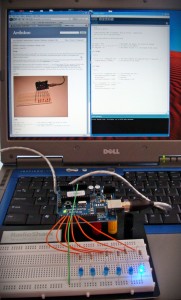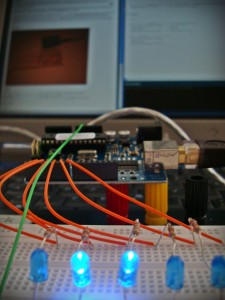Android anyone?
 While I’ve really been enjoying coding with Pygame and Python… one thing they don’t seem to be able to do is play well with mobile phones. Specifically things like the iPhone and Android devices. Everyone I show my BubblePaint Pygame program to has the same comment: You should put that on the iPhone! And I’d love to! But I don’t see Python entering into the iPhone’s future anytime soon, and I have no real want to learn Objective-C or C++ for iPhone dev. Plus, I really don’t want to have to buy a Mac just to release my iPhone apps :-S
While I’ve really been enjoying coding with Pygame and Python… one thing they don’t seem to be able to do is play well with mobile phones. Specifically things like the iPhone and Android devices. Everyone I show my BubblePaint Pygame program to has the same comment: You should put that on the iPhone! And I’d love to! But I don’t see Python entering into the iPhone’s future anytime soon, and I have no real want to learn Objective-C or C++ for iPhone dev. Plus, I really don’t want to have to buy a Mac just to release my iPhone apps :-S
Enter Android. Can develop for it on the PC (plus!). Uses Java as its programming language. And now appears to support Python scripting! So far so good! (well, other than the fact I signed a 2-year deal with AT&T so my wife could get an iPhone <wink> )
I’m a bit warmer to Java than other languages based on my familiarity with Processing. But I still really don’t “know Java” (however I have to say that Processing was a gentle introduction). So I went out this weekend and picked up these books:
- Sams Teach Yourself Java 6 in 21 Days
- Android Wireless Application Development – ( Authors Book Blog )
- Java Pocket Guide – (purchased earlier…)
Then I:
- Installed Eclipse IDE, since the Android platform has some Eclipse-specific plugins to aid in it’s development.
- Installed the Android SDK (thanks to this post)
And finally I:
- Started reading the Java book.
I’m now on… day 3… of 21. It’s going pretty fast since Java is not so unlike Python in many regards. The only thing I find unfortunate is that the more I learn of Java… the more I miss Python. Python’s dynamic typing is sooooo much more conducive to my brain than Java’s static typing, and the stripped down syntax of Python just makes me feel… cleaner, compared to all the brackets, semi-colons, variable casting and whatnot needed in Java. Bah! End rant.
We’ll see where this leads: I really like the idea of making games on mobile devices, and Android seems like an accessible platform. I just hope AT&T starts selling the devices soon (the emulator will only get me so far) and learning Java doesn’t cause me to rant too much….



